Do-it-yourself tombstone cross made of wood. Detailed justification
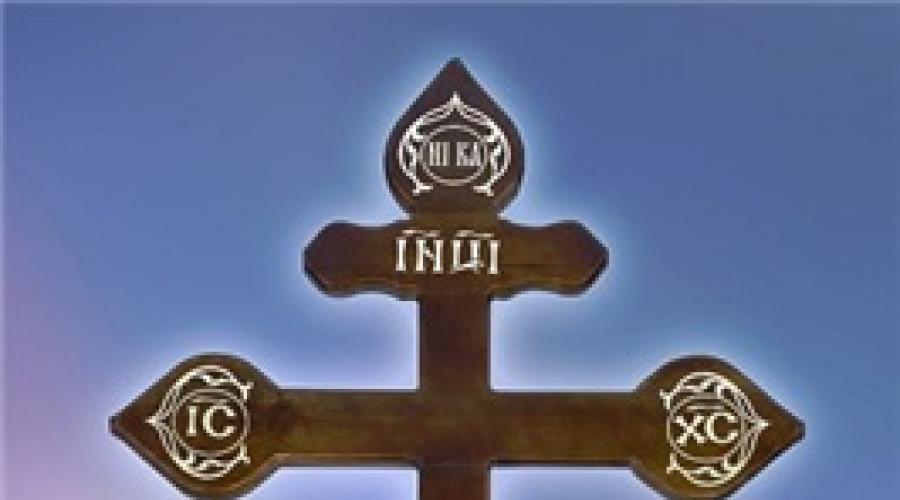
In our organization, the cost of grave crosses is minimal, because we are direct representatives of the largest manufacturers of these funeral ritual items in Russia. In stock, always, enough, a large assortment that is able to satisfy many buyers and customers. Also, for you, there is an opportunity to pick up any other model of the grave cross to order. Delivery in Moscow, within the Moscow Ring Road: 1000 rubles.
Cross pine
Price: 2000 rubles
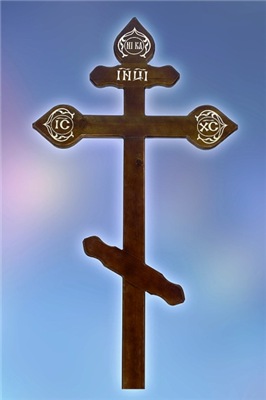
Pine cross "Carved"
Price: 2400 rubles
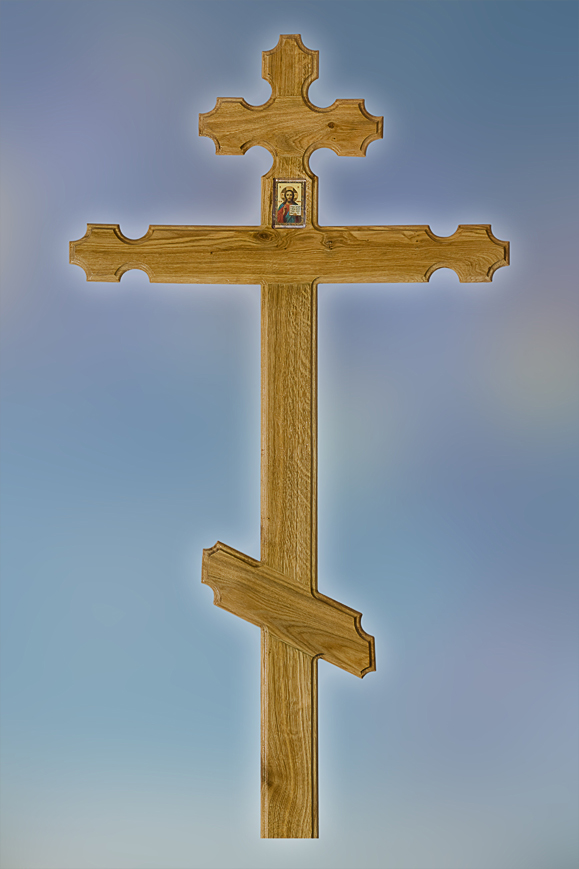
Cross oak: "Carved" (no icon)
Height: 210 cm, width: 10 cm, thickness: 5 cm.
Price: 4500 rubles
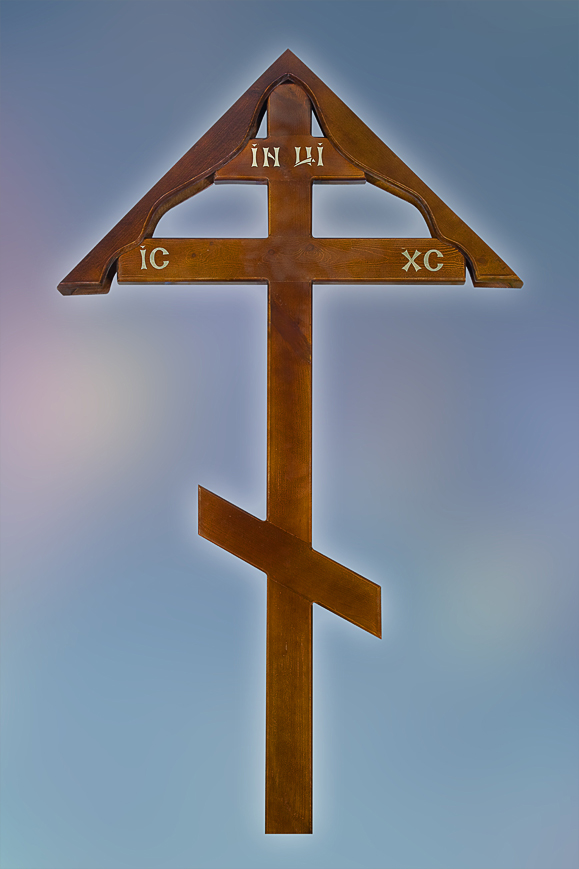
Cross pine: "House"
Height: 210 cm, width: 10 cm, thickness: 5 cm
Price: 3000 rubles
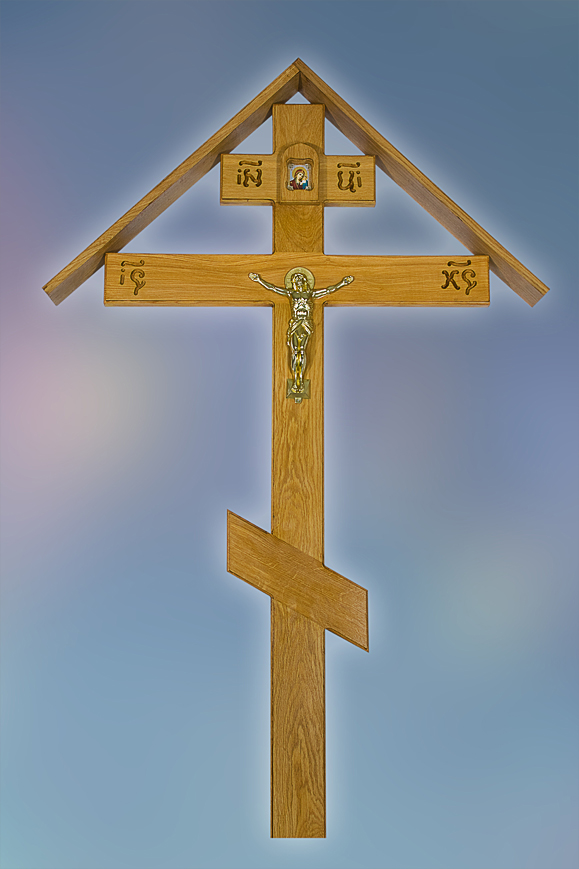
Cross oak: "Elite"
Height: 210 cm, width: 10 cm, thickness: 5 cm.
Price: 5000 rub. (no icon and crucifix)
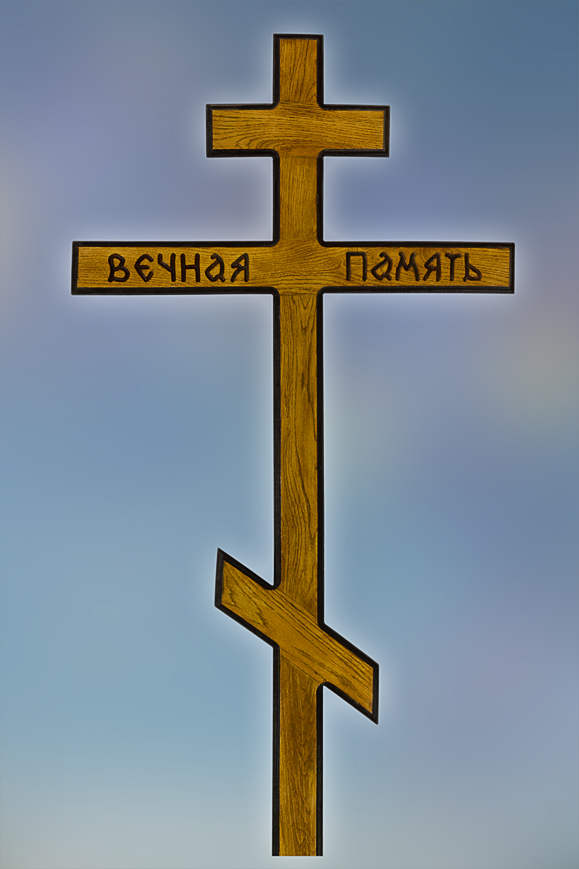
Cross oak: "Eternal Memory"
Height: 210 cm, width: 8 cm, thickness: 8 cm.
Price: 4500 rubles
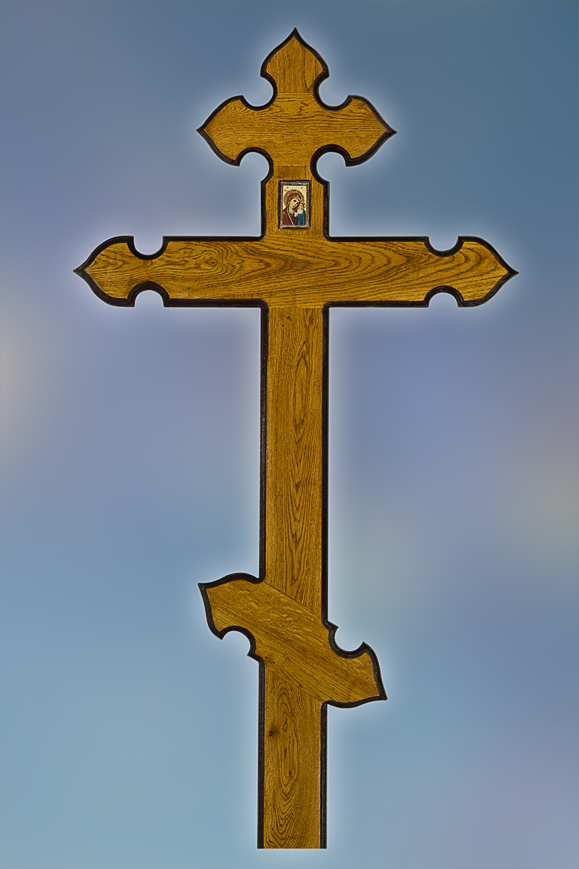
Cross oak: "Dome"
Height: 210 cm, width: 12 cm, thickness: 10 cm.
Price: 5000 rubles (without icon)
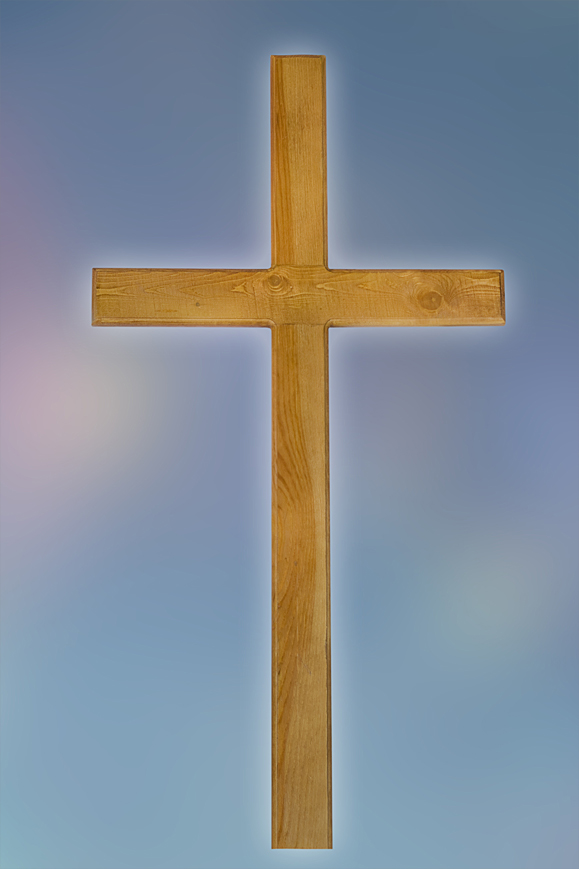
Cross pine or oak: "Catholic"
Height: 210 cm, width 10 cm, thickness: 5 cm.
Price: pine: 2000 rubles., Oak: 3500 rubles
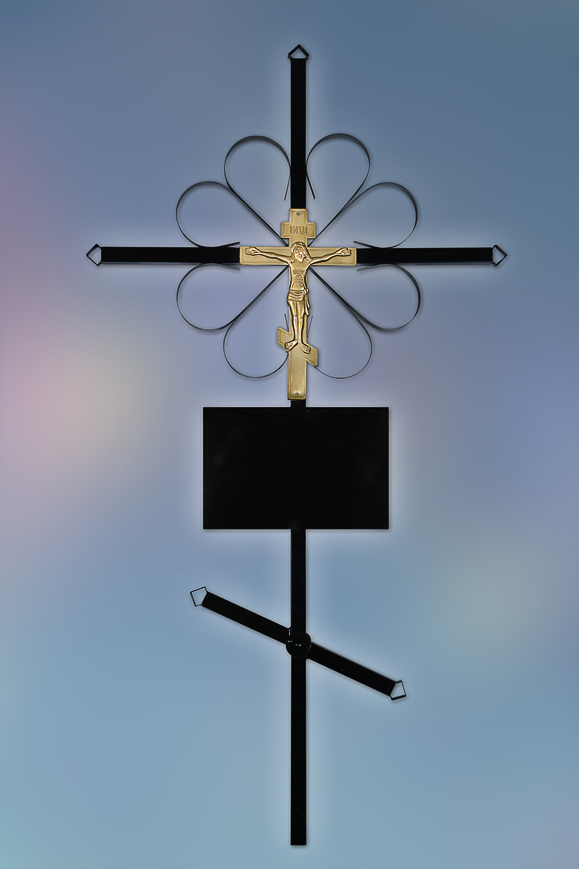
Metal cross with a crucifix
Price: 1600 rubles
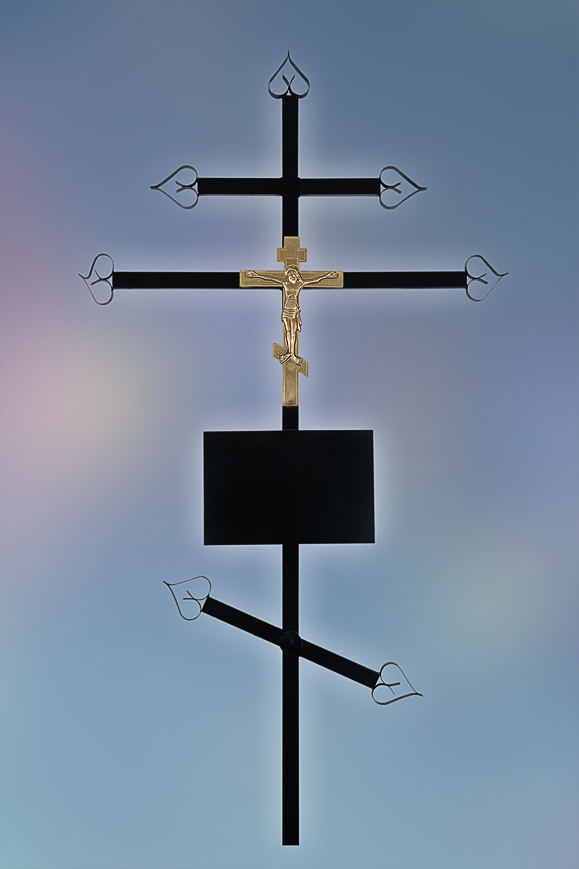
Metal cross: "Orthodox"
Height: 200 cm, width: 3 cm, thickness: 3 cm
Price: 1900 rubles

Metal cross: "Golden" with a crucifix
Height: 200 cm, width: 3 cm, thickness: 3 cm
Price: 2500 rubles
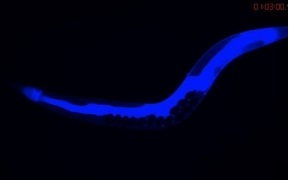
Cross Plates
Material: plastic
Price: 600 rubles
About grave crosses
Grave crosses are considered a mandatory attribute for believing Christians, which must be present at the burial place of the deceased in a related grave. In one form or another, the image of the cross is present on most tombstones, symbolizing eternal life deceased. It is believed that the installation of a cross on the grave is mandatory, even if later it will be replaced with a tombstone. Even when the monument is erected, the cross is dug in behind it, or buried in the same area.
The tradition of marking burial places with carved or simple crosses has deep roots. Before the baptism of Rus, it was customary for the Slavs to bury the deceased first in dominoes, and a little later, the bodies began to be burned in ritual bonfires or mounds were erected. The tradition of burying the bodies of the dead in graves with the subsequent installation of memorial tombstones or crosses was the result of the influence of Byzantine culture and the consequence of the coming to Russia of Christianity.
After the Christianization of the population, pagan culture influenced the style of funeral crosses for a long time. For example, the installation of a kind of roof over the structure of the cross was widely used, which imitated the ancient dominoes, as well as a cross enclosed in a circle - a symbol of the sun of the ancient Slavs. Such crosses can be seen in the burials of the Old Believers, who reproduced pagan cults and symbols in the most detail in their Christian rituals.
Due to the popularity of this grave attribute, on this moment exists big variety ritual grave crosses. Cemetery crosses can have different styles, colors, sizes, materials, and, of course, cost. Today, there are three types of funeral crosses: Catholic, Orthodox and Old Believer. Each of them has its own characteristics.
So, the Catholic cross can be distinguished by its laconicism and minimalism of design; it, unlike the Orthodox one, is devoid of the lower and upper cross-members. Usually, catholic crosses are made of stone, less often of wood. They are also devoid of decorative elements, and a commemorative inscription is carved either on a plate at the base of the structure, or on the cross itself.
Another type of Catholic crosses, most often found among southern Catholics - Portuguese, Spaniards and Latin Americans - is a magnificent decoration of graves with the installation of decorated stone crosses decorated with floral ornament, engraving, bas-relief and images of angels and saints. Also, an ornate tombstone and sculptures of angels can be used here.
Orthodox crosses are most often made of pine, oak or metal - the most readily available and inexpensive materials. This approach is dictated by the postulates Orthodox Church, propagandizing the rejection of luxury and expressing a negative attitude towards excessive pathos in the approach to funerals and the wealth of burial places of the deceased. The surface of the wooden cross is treated with varnish or paint to increase its durability and improve its appearance.
Despite this, more durable and aesthetic stone and granite grave crosses are also widely used in Russia. They can be decorated with engraving. A commemorative inscription about the deceased can be applied both on the cross itself and on a commemorative plaque attached to the structure. Also, oval-shaped photos or portraits of the deceased carved on granite are often attached to modern grave crosses.
Today, there is a huge selection of ritual crosses for the grave, in addition, there is always an opportunity to purchase this funerary attribute, made in accordance with an individual order. Thus, in our time traditional image the funeral cross is becoming more and more blurred, and the requirements for funeral rites simplified. However, one thing remains unchanged - in the first time after the burial, a ritual wooden cross is traditionally installed on the grave of the deceased. Buy a cross for a grave, a funeral,
After the funeral, it is customary to place a wooden cross on the grave.
The symbol of Christ's crucifixion spiritualizes the burial place, and according to the instructions of the Church, it is the only one possible kind monument, since with its life-giving power it helps the soul to calmly say goodbye to its worldly affairs and go to the heavenly abode.
There are many types of crosses that are somehow related to Christianity.
This is the Egyptian, depicted in the form of the hieroglyph "life", and the equilateral Greek, which is considered the first symbol of Christianity that appeared in Russia, and various monogram forms(sun-shaped, Konstantinovsky, trident), and more familiar to us four-pointed. V Orthodox tradition all forms are revered cult symbol, since each of them contains a deep spiritual meaning. But it is precisely eight-pointed cross personifies the great sacrifice of Christ in the name of all mankind and is considered the closest to the authentic one on which Jesus was crucified. And it is precisely this form that is recommended to be installed on the grave.
Diagram of an eight-pointed cross
The Orthodox eight-pointed cross consists of four crossbars, each of which has sacred meaning and takes its place.
Their location corresponds to the proportions of the human body, in other words, the rule of the "golden section". According to this rule, the coefficient of the most harmonious ratio of the two sides is 1.618.
If, for convenience, we take the base size of the cross for 1.618 meters, then the layout of its crossbars and their dimensions will look like this:
The longest longitudinal bar measures 1.618 meters.
The upper crossbar is the prototype of a tablet with the inscription: “This is Jesus, King of the Jews,” nailed over the head of Christ. Its size is equal to the distance from the top of the cross to the center of the middle crossbar, in our case it is 0.382 meters.
The distance between the two crossbars is 0.236 meters.
The difference between the two previous dimensions is the distance from the upper end of the longitudinal bar to the center of the upper transverse bar - 0.146 meters.
The slanting bar is the foot. She represents the scales of righteousness. According to biblical legends, two robbers were crucified on Calvary on either side of Jesus. The edge of the foot, which is located on left hand from the Savior, indicates a robber who blasphemed and trampled on Christ and his followers. The robber crucified by right hand, repented and received forgiveness, which symbolizes the end of the oblique crossbar pointing up. From the ground to the bottom crossbar, the distance will be 0.5 meters.
The cross can be of any height, but its other dimensions must change in proportion to the height.
In addition, the method of its installation on the grave depends on the size of the wooden cross. Thus, massive, tall items will require additional strengthening measures so that the cross stands at the burial site for at least a year and is not blown down by a hurricane. One year after the burial and the installation of the wooden crucifix, the soil has settled enough to erect a monument made of natural durable stone.
The manufacturing company "Danila-Master" produces a wide range of models of monuments for the grave, among which there are headstones-crosses.
All monuments of our production meet high quality standards, look dignified and majestic.
For one book in our publishing house it was necessary to depict Orthodox cross... There are many images of crosses in Yandex, but the quality of the image required that the cross be drawn initially in a graphics editor. We climbed to draw - it does not work, the proportions are not the same. They began to look for the right proportions - it turned out that there are such. And all the crosses that are made for the needs of the Russian Orthodox Church are made only according to these proportions. And we are talking here not only about the holiness of the Cross, as one of the main symbols of Orthodoxy, but also about its symbolism, clearly linked to proportions. But first things first...The cross is a symbol of God - our Lord Jesus Christ. For every believer an orthodox person the cross is associated with the memories of the Lord's death throes for the sins of all people from the fall of Adam and Eve to the end of time. Even if there is no image of the crucifixion on the cross, it is invisibly present there. Hence, the proportions of the cross are related to the proportions of the person.
Creating living organisms from the simplest to humans, the "Creator of All Sorts" used a single matter and a universal proportion of the "golden section" to shape living beings. "Gold" is present everywhere: in the form of a mollusk shell, and a turnip in the garden, and in the proportions of the crown of creation - a man. For example, the ratio of a person's height to height from the heels to the navel is the same as the ratio of the size from the heels to the navel to the height from the navel to the crown of the head, and is the same as the sequential ratio of the sizes of the phalanges of any finger to each other. This universal ratio is 1: 0.618.
The proportions of the "golden section" are present in all the harmonious phenomena of life, before they were present in the creations of man, for example, in classical music(in the culminating "nodes" of the works), but there are no such proportions in jazz or rock. The same can be said for modern architecture.
God is Perfection, therefore, the symbol of God must be built according to the laws of His creation: in the "golden" proportion. In other words, the proportions of the cross are the division of a straight line segment in the "golden" ratio. The cross should also reflect the history of its origin, as the Three-part Honest and Of the Life-giving Cross Lord's.
Greek (Korsun cross)
Picture 1.
The cross is the tree of life, the guardian of the Universe, therefore, it is no coincidence that many decorative elements of the cross are associated with its origin and have the appropriate names: leaf-shaped “burrows” located at the three upper ends of the cross, “branches” on the main “trunk” above the tsata, “ sun ”and rays emanating from it in the center of the baroque cross. Analyzing temple crosses, chronologically, several main types of crosses known to Russian architects can be distinguished: Greek equal cross, its other name is Korsun (picture 1) , by the name of the city, from where Russia directly took Orthodox Faith; Russian Orthodox eight-pointed cross (picture 2) ; baroque cross (picture 3) .
All of the above types of crosses differ among themselves in proportions, quantity and nature of decorative elements. The Greek cross is usually inscribed in a square or rectangle in the "golden ratio", and usually the crossbar divides the vertical in half, hence the equal-pointed cross. The ancients cathedral churches usually had Greek crosses with decorative elements, while the central cross was more elongated vertically. The crosses had tsats on the bottom as a symbol of God's blessing, which also meant the bishop's service in this church. The body of the cross had inserts - metal plates with perforated threads. The topic of the plots was usually “ heavenly groves»: Birds and flowers.
Russian eight-pointed cross
Figure 2.
The Russian eight-pointed cross most often fits into a rectangle, the sides of which relate to each other in the “golden ratio”. The cross is ascetic and has no decorative ornaments. Consists of a vertical pillar and three crossbars: the top signifies a tablet on which Pilate made inscriptions in Greek, Roman and Hebrew; the middle one - the arms of our Lord Jesus Christ are spread out on it, embracing the whole world; the lower crossbar marks the place where the Lord's feet were nailed. The lower bar is inclined, if you look at the cross from the west, then left side the bar is up and the right bar down. According to the teachings of the Church, on The last judgment the righteous will stand on the right hand of the Lord, and the sinners on the left, the first will go to heaven, to heaven, and sinners to hell, to hell.
From anthropometrics, we know that if the size of the span of a person's arms is practically equal to his height, then the size of the middle crossbar of the Russian cross is equal to the vertical size from the middle crossbar to the bottom. Based on this rather simple and clear position, you can find all the other proportions of the eight-pointed cross. If we take the height of the cross equal to 1.0, then its middle crossbar should be equal to 0.618, the distance from the middle crossbar to the bottom will also be equal to 0.618. The distance from the upper crossbar to the top of the cross is assumed to be equal to the distance from the lower crossbar to the base of the cross, if we represent it in numbers, we get: 1) 1.0 - 0.618 = 0.382;
2) 0.382: 2 = 0.191 (see Fig. 2).
Depending on the height of the structure and its visual perception from the ground, the vertical elements of the cross stretched out (most often on the bell towers, because of their insignificant, in relation to the height, dimensions of the plan).
Baroque cross
Figure 3.
The baroque cross arose and became widespread in Russia in the 18th century. Its appearance is associated with the dominant at this time of the same name architectural style... Peculiarity of this style- "splendor" of forms and saturation with elements that have curvilinear outlines. Although many provincial temples of this period are modest in form and the number of decorative elements, the crosses are “rich”: saturated with elements that have a subtle graceful drawing and are covered with leafy zealot.
The analysis of baroque-type crosses allows us to determine their proportions, which were most often used by the baptism masters when creating a “typical” cross. The ratio of the height of the baroque cross to its height to the main crossbar is 1,000: 0.618. The size from the center of the crossbar to the top of the cross is equal to half the span of the cross in the crossbar and is 0.382 of the total height. As in the eight-pointed Russian cross, the size of the main crossbar of the cross without decorative "burrs" is equal to the height from the crosshair to the lower crossbar - tsata (0.472 of the height of the cross) (see Fig. 3). Crosses with tsats, as mentioned above, were placed only on churches where the bishop served. The division of each large element into smaller components is also carried out in the "golden ratio", thus achieving the harmony of the whole and each individual element.
In the process of further analysis of the proportions of the crosses, the dependence of the main dimensions of the crosses on the dimensions of Orthodox churches and chapels, and also, consequently, on their visual perception from the ground, was revealed. For example, the following relationship was revealed: the crosses of relatively low chapels are closer to a square or rectangle in the "golden section", and the proportions of the crosses of high-rise bell towers tend to a double square in height.
The obtained research results were defended at the scientific and methodological council at the management of culture and served as the basis for the author's practical activities to recreate the destroyed in Soviet time completions Orthodox churches as well as the design of new cathedrals, churches and chapels. In particular, this is the design of the Cathedral of St. Nicholas Nicholas Monastery of Pereslavl-Zalessky; the Church of St. George the Victorious PK "Slavich", designing a chapel at the source of the appearance of the icon of the Great Martyr Barbara and the chapel of St. Dmitry Prilutsky in the Pereslavl region; design of the wooden church of St. Tikhon and the New Martyrs of Russia, the stone church of John the Baptist and the Cathedral of the Resurrection of Christ in the city of Dzerzhinsk, Nizhny Novgorod region.
Thanks to the information about the proportions, we have drawn the correct header. Many will say - what's the problem, take and redraw from any sample? However, it is very important to reflect in the book not the skill of the draftsman (read - designer, decorator), but respect for the Faith, for the tradition in which this Faith lives, and for the culture in which the tradition is displayed.
Information from here.
Eight-pointed crosses - by historical information, are the most reliable in form of the cross on which Christ was crucified. What material the cross is made of is not particularly critical. But it is better to give preference to such natural materials as wood and metal.
Grave crosses: sizes
If you want to install cross on grave, dimensions do not have standard proportions. But it is still better to stick to such values. The height of the cross is divisible by three. The cross bar is located under the upper third. In turn, the upper third is divided by two.
A plate is attached to that place. The length of the lower part of the plate is equal to 1/2 third of the upper part of the cross (it turns out that the plate and a third of the upper part of the cross create an equilateral cross).
The width of the cross bar of the cross is 1/3 of the height multiplied by two. It turns out that the upper end is 1/3 of the height of the center of the cross, the lateral ends are 1/3, and the lower is 2/3. On lower part of the cross, an inclined bar is attached, which is parallel to the vertical upper part of the cross and is located above the third of the lower part of the cross. The plank slope is 45 degrees. Its length is equal to the length of the plate.
The cross is located on the base, which symbolizes Golgotha and has the form of steps. A spear is depicted on the left side of the cross, from the base of the cross. If we divide the transverse end of the cross into three, then the beginning of the spear at the base of the cross is at 1/3 level from the center, and the end (sharp part) is 2/3. The length from the spear point to the transverse end is equal to 1/3 of the transverse end.
A sponge is also depicted on the right. All available proportions are very relative, and the cross is not always depicted in this way.
Where and how they put a cross on the grave
The cross installed on the grave is a preacher of immortality and future resurrection. In the grave of the deceased, according to custom, they lower their face to the east, with the words that it is customary to pray to the east - in the hope of the coming of the Morning of eternity, and in the meaning that the deceased goes from the west (sunset) of life to the East of eternity. In memory of the fact that the gates to the Kingdom of the Lord were opened by the torment of the Cross of our Savior, and an eight-pointed cross is erected over the grave mound, as a symbol of salvation. The late Christian believed in the Crucified One, wore during his earthly life pectoral cross and now rests under the cover of the cross. It is installed at the feet of the deceased. The crucifixion is turned to the face of the deceased, so that at the resurrection of the deceased, rising from the grave, he would see the sign of the victory of the Lord over the devil.